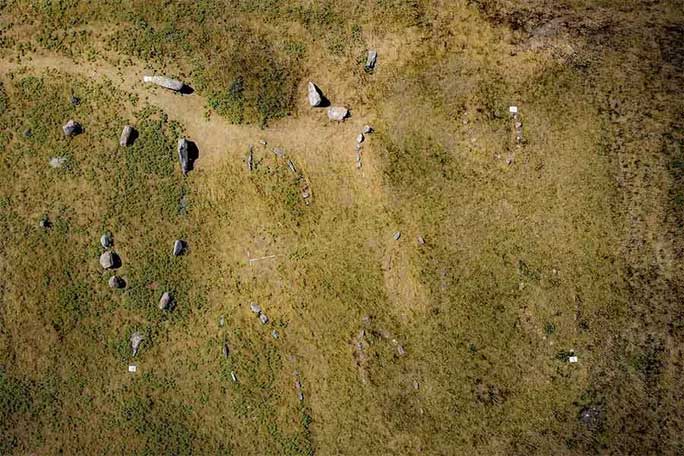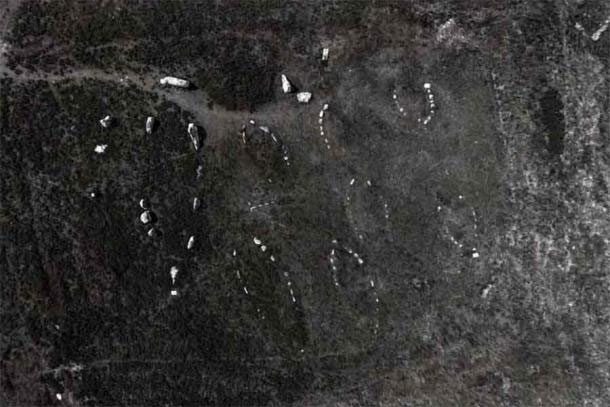Ten ghost ships have been excavated that astonishingly match a drawing from centuries ago, illustrating a mysterious area with 20 special Viking graves.
A recent study published in The Journal of Island and Coastal Archaeology (JICA) confirms that the 10 “ghost ships” unearthed at the Kalvestene site on Hjarnø Island in Denmark are indeed the legendary “ship graves” of the Vikings. Centuries ago, the island of Hjarnø was inhabited by the Vikings.

The stones used as grave markers have been disturbed after many centuries, but they still raise suspicions among archaeologists – (Photo: Flinders University).
With a life closely tied to ships, the Viking elite were often buried in a small ship instead of a coffin. Some nobles were even interred in longships measuring dozens of meters.
The “ghost ships” being excavated by a team of archaeologists led by Flinders University (Australia) are situated closely together and date from 800 to 1050 AD. Unpredictable weather has revealed stone slabs resembling gravestones. The archaeological team used LiDAR ground-penetrating radar to survey the area and were surprised when the outlines of 10 ghost ships faintly appeared in the images.

The LiDAR image made many ghost ships “materialize” – (Photo: Flinders University).
The location and shape of these “ghost ships” correspond remarkably with an ancient illustration by Ole Worm, a physician, natural historian, and renowned antiquities collector from Denmark who lived in the 17th century. Ole Worm’s drawings depict two Viking “ship graves” with a total of 20 graves, but the second site remains a mystery.
The research is just beginning, and a large-scale excavation is being planned. According to archaeologists, this is a significant discovery because the Viking “death ships” often carried a wealth of goods and everyday items for use in the “afterlife”, thus helping modern people gain much insight into the lives of those from that era.
According to Ancient Origins, similar “ghost ships” found in Northern Europe show that the Vikings were linked to impressive maritime journeys and that their economy seemingly relied heavily on piracy and trading valuable goods.





















































